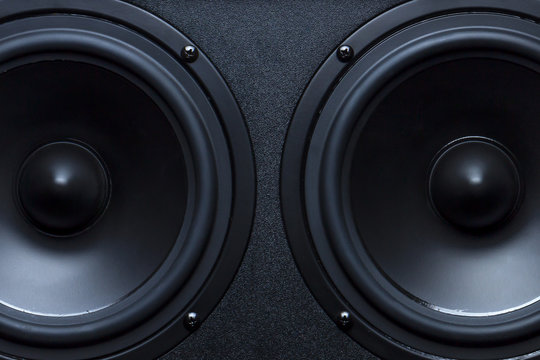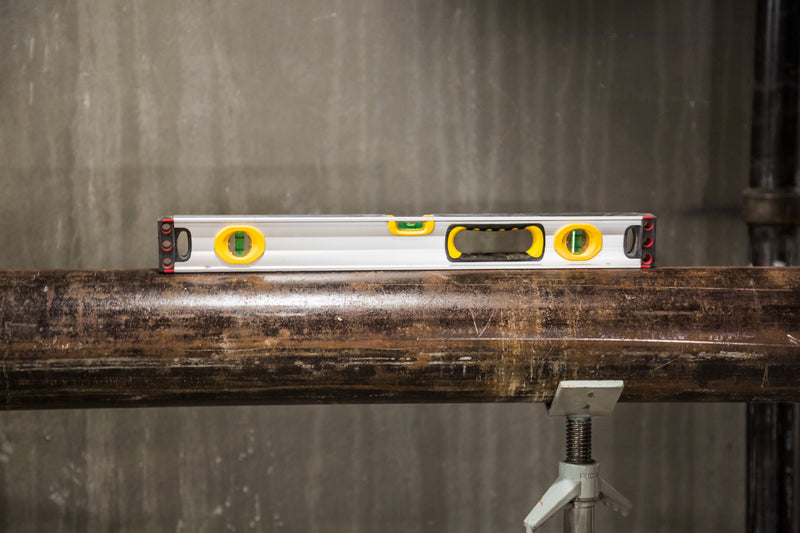As technology continues to evolve, so does the way we listen to music. For audiophiles, achieving the perfect sound is a never-ending quest, and one of the most crucial components in any sound system is the subwoofer. However, many people overlook a critical aspect of connecting their subwoofer – using high-level input. In this article, we’ll explore the advantages of using high-level input for your subwoofer and how it can elevate your listening experience to new heights.
Understanding High-Level Input for Subwoofers
High-level input for subwoofers is a feature that allows the speaker to be connected directly to an amplifier or receiver using speaker wires. This connection method is useful in situations where there is no dedicated subwoofer output on the audio source. High-level input helps avoid signal loss and provides a cleaner, more efficient transfer of power from the amplifier to the subwoofer.
When using high-level inputs, it’s important to note that not all amplifiers support this type of connection. Check your equipment manual or contact the manufacturer before attempting to connect your subwoofer using high-level input. Additionally, ensure that you have enough wire length and gauge to properly connect your system without interference or electrical problems.
Overall, high-level input offers a simple and effective way to improve sound quality in home theater systems, particularly when connecting older or less sophisticated components together.
The Benefits of Using High-Level Input for Your Subwoofer
High-level input for subwoofers offers several benefits over the traditional low-level input. Firstly, it eliminates the need for a separate amplifier or receiver to power the subwoofer since it utilizes speaker wire directly from your home theater system’s amplifier. This reduces cost and simplifies setup.
Secondly, high-level inputs have a built-in filter that helps in isolating lower frequencies, allowing for better sound quality and bass response. The higher voltage of the signal carrying more details ensures an excellent listening experience.
Lastly, by providing direct connectivity to amplifiers with high impedance loads or bridged output stages capable of generating signals of up to 400 watts RMS without risking damage in any way – this method avoids distortion issues common with low-Level Input problems because those can get induced noise from outside sources such as appliances being turned on/off nearby.
The advantages associated are so significant that many top-tier manufacturers exclusively develop subwoofers with high level inputs nowadays.
How High-Level Input Improves Sound Quality in Subwoofers
High-Level Input is a great way to improve the sound quality of your subwoofer. When you use high-level input, the subwoofer receives the same signal as your main speakers, ensuring that the sound is consistent across all channels. This means that you won’t have to worry about any phase issues or delays that can occur when using a separate amplifier for your subwoofer.
Another advantage of high-level input is that it allows you to use your subwoofer with a wider range of audio equipment. Many older amplifiers and receivers don’t have a dedicated subwoofer output, but they do have speaker outputs. By using high-level input, you can connect your subwoofer directly to these speaker outputs and still enjoy deep, powerful bass.
Overall, high-level input is a simple and effective way to improve the performance of your subwoofer. Whether you’re setting up a home theater system or just looking for better sound quality from your music system, high-level input is definitely worth considering.
The Advantages of Using High-Level Input in Home Theater Systems
High-Level Input has become increasingly popular in home theater systems, and for good reason. One of the biggest advantages is that it eliminates the need for a separate amplifier to power the subwoofer. This saves space, reduces clutter, and can even save you money on equipment costs.
Another advantage of using high-level input is improved sound quality. Because high-level input connects directly to your audio source (such as a receiver or amplifier), it ensures that the subwoofer receives an unaltered signal with minimal interference. This results in tighter bass response and clearer overall sound.
In addition, using high-level input also allows for better integration between the subwoofer and other speakers in your system. By connecting directly to your main speaker outputs, high-level input ensures that all speakers are working together seamlessly to deliver a cohesive listening experience.
Overall, choosing a subwoofer with high-level input can greatly enhance both performance and convenience in your home audio setup.
High-Level Input vs Low-Level Input: Which is Better for Your Subwoofer?
High-Level Input and Low-Level Input are two ways to connect your subwoofer to your audio system. High-level input uses speaker wire connections, while low-level input uses RCA cables. Both have their advantages, but high-level input is preferred by many audiophiles because it provides a stronger and cleaner signal. High-level input also allows you to use your subwoofer with a wider range of audio systems, including those without a dedicated subwoofer output. Low-level input is best suited for high-end audio systems that have a dedicated subwoofer output. However, if you have an older or more basic audio system, high-level input may be the better choice. When deciding which type of input to use, consider the capabilities of your audio system and the type of sound quality you want to achieve.
How to Connect Your Subwoofer Using High-Level Input
To connect your subwoofer using high-level input, first, identify the speaker outputs on your amplifier or receiver. These are usually labeled as “front left” and “front right.” Next, connect a set of speaker wires from these outputs to the corresponding high-level inputs on your subwoofer. Make sure to match the positive and negative terminals correctly.
Once connected, adjust the volume and crossover settings on your subwoofer to optimize its performance with your other speakers. It’s important to note that using high-level input may require more power from your amplifier or receiver compared to low-level input.
Overall, using high-level input for your subwoofer can provide several benefits such as improved sound quality and compatibility with a wider range of audio systems. With proper setup and adjustment, you can enjoy a more immersive audio experience in your home theater or music setup.
Common Misconceptions About High-Level Input for Subwoofers
High-Level Input vs Low-Level Input: Understanding the Difference
High-Level Input and Low-Level Input are two distinct ways of transmitting audio signals to subwoofers. High-level input uses speaker wire connections, while low-level input uses RCA cables. One common misconception is that using high-level input will damage your subwoofer; however, this is not true as long as you use the appropriate wiring and follow the manufacturer’s instructions. Another misconception is that using low-level input always results in better sound quality than high-level input, but this may not always be the case depending on your specific setup. Ultimately, it comes down to personal preference and what works best for your audio system.
Why High-Level Input is Beneficial for Subwoofers in Home Theater Systems
High-level input for subwoofers is often misunderstood, with some people believing that it is only useful for car audio systems. However, this is not the case. High-level input is actually beneficial for subwoofers in home theater systems as well. It allows for a direct connection to the amplifier, resulting in a cleaner and stronger signal. This means that the subwoofer can produce a more accurate and powerful bass response, enhancing the overall sound quality of your home theater system. Don’t let misconceptions hold you back from experiencing the benefits of high-level input for your subwoofer in your home audio setup.
The Improved Sound Quality of Using High-Level Input for Your Subwoofer
Using high-level input for your subwoofer is often misconceived as unnecessary or giving little advantage to sound quality. However, this couldn’t be further from the truth. By using high-level input, your subwoofer receives an unaltered signal directly from the amplifier, resulting in a cleaner and clearer bass response. This eliminates the need for a separate amplifier and minimizes signal loss that might occur through low-level input connections. The improved sound quality of using high-level input leads to more impactful music playback and movie experience than when using other types of connections like RCA cables or low level inputs with transformers.
Debunking Myths About High-Level Input and Potential Damage to Audio Equipment
There is a misconception that using high-level input can cause damage to your audio equipment, but this simply isn’t true. High-level input uses the same signal from your amplifier as low-level input, just in a different way. It’s designed to work with systems that lack dedicated subwoofer output connections. Additionally, some believe that high-level input reduces sound quality compared to using low-level input; however, this is false as well. In fact, many audiophiles prefer using high-level inputs because they allow for greater flexibility and control over their audio system’s setup. Don’t let these myths deter you from experiencing the benefits of high-level input for your subwoofer!
Choosing the Right Subwoofer with High-Level Input for Your Home Audio System
When choosing a subwoofer for your home audio system, it’s important to consider high-level input as one of the key features. High-level input allows you to connect your subwoofer directly to the speaker outputs of your amplifier or receiver, without having to use a separate RCA cable.
When it comes to selecting the right subwoofer with high-level input, there are several factors that should be taken into account. First and foremost, you need to ensure that the subwoofer is compatible with your amplifier/receiver and speakers. It’s also important to choose a model with sufficient power handling capabilities and frequency response range.
Another crucial factor is the size of the room where you’ll be using the subwoofer. A larger room requires a more powerful and capable unit in order to fill up space effectively. Finally, look for models that offer additional features such as variable phase control or adjustable crossover settings.
By taking these factors into consideration when selecting a subwoofer with high-level input, you can enhance your overall listening experience by achieving better sound quality and improved bass performance from your home audio system.
In conclusion, high-level input for subwoofers provides a multitude of benefits and is a great way to enhance your home audio system. By understanding the advantages of using high-level input, you can improve sound quality and create an immersive listening experience. Whether you’re looking to upgrade your current subwoofer or setting up a new home theater system, it’s important to choose the right equipment with high-level inputs that meet your specific needs.
If you’re interested in learning more about audio technology or other related topics, check out our website for more informative articles. We hope this article has been helpful in providing insight into the advantages of using high-level input for subwoofers and will assist you in making informed decisions when selecting audio equipment for your home entertainment setup.






